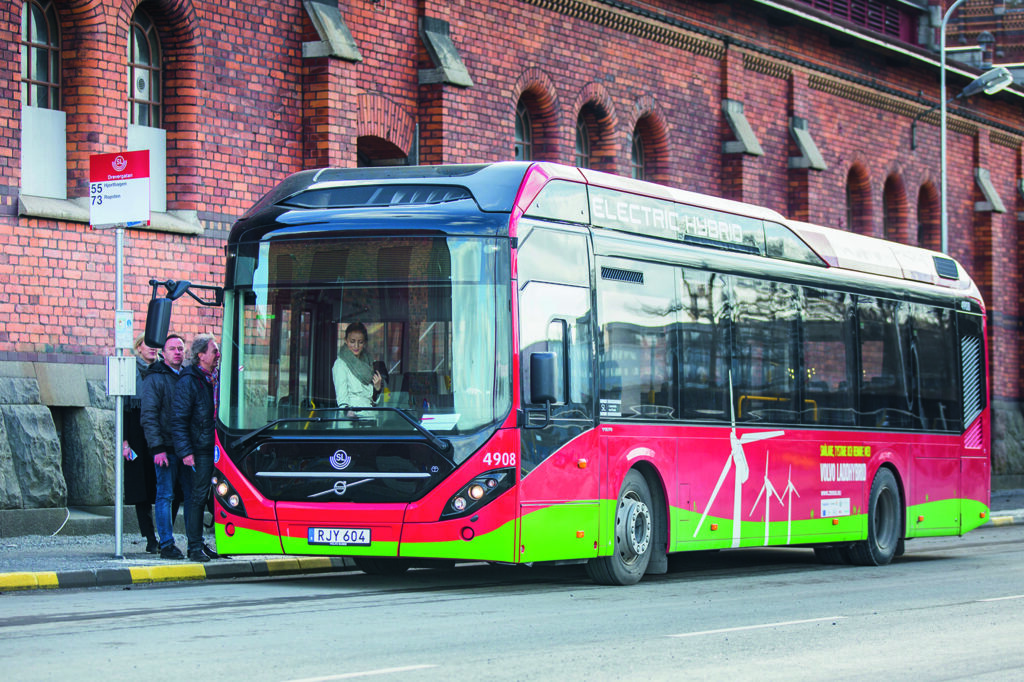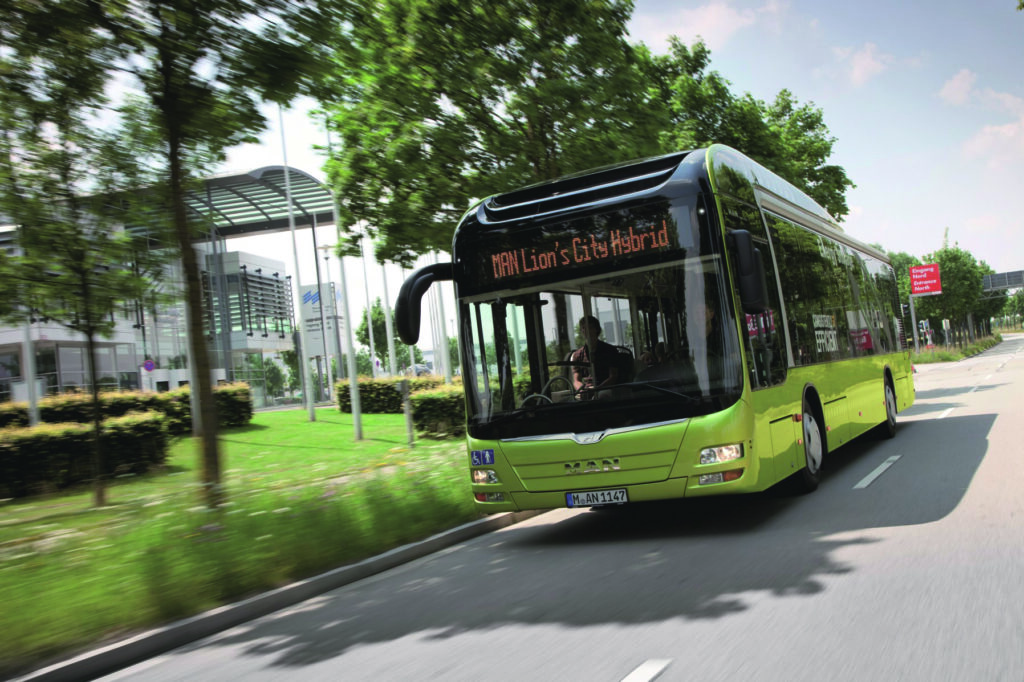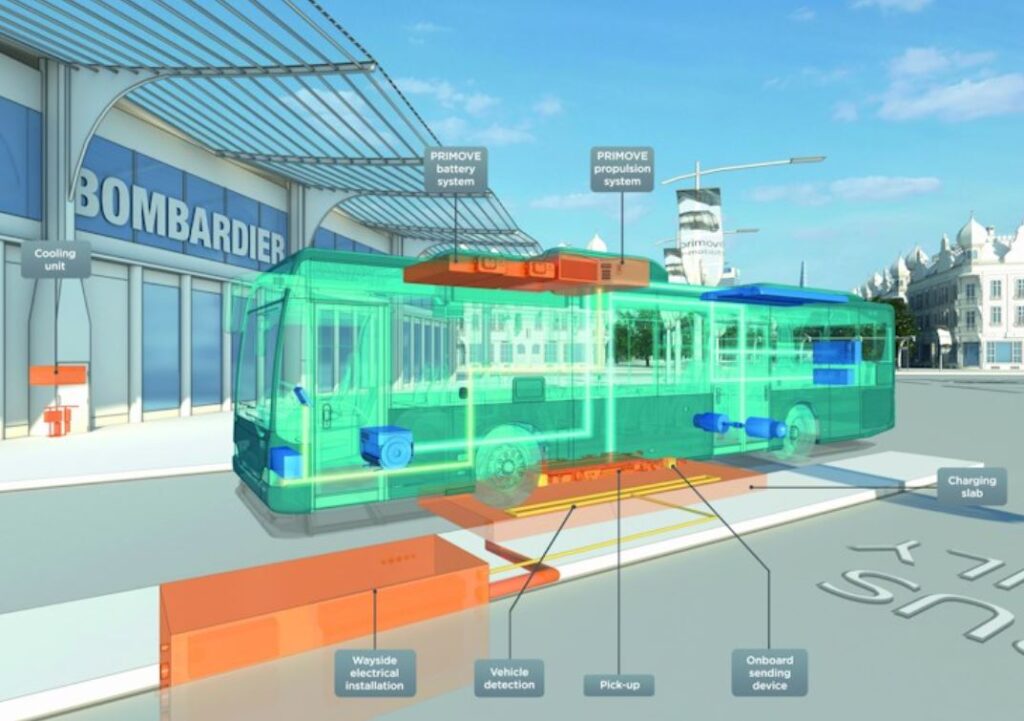Europe 2030 – Cleaner Buses
A reduction in greenhouse gas (GHG) emissions by 40% below the 1990 level. A target for renewable energy of at least 27% of the energy mix. These goals represent two pillars of the new European Union (EU) framework on climate and energy for 2030, presented by the European Commission (EC) in January 2014. In this context, how is the bus sector performing?
Buses have long suffered from a poor public image, often perceived as noisy, unreliable, slow, uncomfortable and polluting. Certainly, efforts to address these shortcomings have been made over the years, particularly with regards to technology. In the last decade, a genuine “propulsion supermarket” of alternative fuels and drivetrains has emerged, offering a number of clean fuel options to improve air quality, overcome noise pollution, and meet additional EU policy targets. Hybrid and electric buses are now part of a range of available vehicle options, with the latter opening up inviting prospects for the electrification of diesel bus lines.

Zero Emission Urban Bus System (ZeEUS)
A survey conducted by UITP – the international organization for public transport authorities and operators – reveals that electric buses represent about 1% of the 70,000 urban buses currently serving a population of over 100 million inhabitants in 24 European countries. More than 40% of the surveyed cities and operators declared their willingness to change their fleets towards more electric solutions, mainly hybrids and fully electric with batteries.

ratio (percentage totals up >100%). Source: 3iBS survey
This strong trend confirms a dynamic scenario for the future of European bus systems. E-buses represent a big operational challenge and an important change for passengers. Strongly contributing to a cleaner environment, smoother driving and lower noise levels, they provide a completely different feeling and help reinforce the attractiveness of public transport. Today, those that have been introduced in our cities are predominately mini- (8 and 30 seats) and midi- (generally larger than a traditional minibus but smaller than a full-size single decker) buses.
The current challenge is to implement the electric technology on high capacity buses in European cities with important historical structures, complex topography, and limited space. E-buses can only become a relevant alternative to their diesel counterparts if they can carry a high number of passengers with greater energy autonomy while fulfilling a daily service.
With 40 partners representing the entire value chain of standard electric buses (cities, operators, industries, researchers, and energy providers), the ZeEUS project fully embraces the challenge to extend the 100% electric solution to the core part of the bus network. Under UITP’s leadership, and with the co-funding support of the EC, live operational tests in 10 European cities are demonstrating that several electric bus solutions can be implemented on high capacity buses under normal service conditions.
The ZeEUS demonstrations taking place in Barcelona, Bonn, Cagliari, London, Muenster, Plzen, Randstad, Paris, Stockholm and Warsaw are implementing e-buses in different geographical and climatic environments. Local and horizontal evaluations are being carried out to provide decision-makers with the necessary tools to assess the economic, environmental, operational and social feasibility of electric urban bus systems. The ongoing collection of valuable information is an opportunity to share experiences of high capacity e-buses with cities outside the project. Cities leading these experiences are invited to join the ZeEUS Observatory, which enables knowledge-sharing and in-depth discussions on the progress and deployment strategies of high-capacity bus electrification in urban contexts.

Going Electric in London
In March 2015, Transport for London (TfL) announced that a south London bus route is to become the first in the capital to be operated entirely by electric buses. Following initial tests with two vehicles – Optare MetroCity single deckers – a further seven are to be added (manufacturers to be confirmed) by the end of 2015. Passengers are likely to notice that these pure electric buses offer lower noise and vibration levels compared to diesel. Meanwhile, bus operating company Arriva is looking forward to lower maintenance and running costs. Last but not least, the environment will benefit too since the vehicles have zero tail-pipe emissions, which means lower carbon emissions and better air quality.

“This is an exciting new milestone for our bus fleet, which is already one of the cleanest in Europe,” commented Mike Weston, TfL’s director of buses. “We currently have eight electric buses in our fleet and as this number grows we are learning more about this new technology, which alongside other measures like retrofitting older vehicles with enhanced exhaust systems and continuing the expansion of our hybrid fleet, continues to contribute towards our strategy to further reduce harmful emissions from the capital’s bus fleet.”
By 2020 there will be 300 electric buses in passenger service in London, plus, by 2016, over 1,700 hybrids.
Sweden ‘Greens’ its Fleet
As a forerunner in the field of alternative fuels for both private and public transport, let’s take a look at bus-related developments in Sweden. In March 2014, Keolis Sverige, which runs buses in Stockholm, Gothenburg and other major cities, inked a large deal with constructor MAN Truck & Bus. Out of the total contract for 181 city buses, the delivery of which began in the summer of 2014, 52 are hybrid models combining a diesel engine with an electric drive. Low fuel consumption and emissions are de rigueur. The hybrids are designed to save up to 30% on diesel costs, and “to reduce C02 emissions in the same proportions.” An additional benefit is their noise reduction capability, when pulling away from a stop, for example, the vehicle is driven in a full-electric mode, with the diesel engine engaging only after the first few hundred meters.
This large addition of buses, which is being deployed for service in Stockholm and its surroundings, will serve to considerably expand the ‘green’ credentials of the 1,900-vehicle fleet already operated by Keolis Sverige. To date, an impressive 80% of the latter runs on renewables – ethanol, biogas, biodiesel, and B30 diesel (with 30% non-fossil components). Furthermore, by training its drivers in eco-driving techniques, the company says it can cut fuel consumption by 10 to 15%.
Electric Drivetrain Buses
According to a report by Pike Research by 2018, more than 75,000 electric drivetrain buses will be in service around the world. Electric drivetrains – whether for hybrid systems, battery electric, or fuel cell – hold appeal for the bus market for many of the same reasons they do for light duty vehicles: the promise of moving away from oil, efficiency gains, limiting greenhouse gas emissions, and, in many cases, lower operating costs.
Improving Urban Life

While research into alternative drive systems was originally motivated by the high price of oil, pollution, emissions, and noise have since gained prominence on the political and legislative agenda. Buses are a prime target for action because many vehicles with old, polluting engines continue to work all day in city centers. Indeed, while propulsion technologies used in the bus sector have greatly diversified, diesel and biodiesel buses still constitute the lion’s share of Europe’s bus fleet (around 90%). And diesel generates pollutants such as unburned hydrocarbons (HC), CO2, carbon monoxide (CO), nitrogen oxides (NOx), and particulate matter (PM), which can have adverse health and/or environmental effects.
While a regular percentage (ca. 8%) of the bus fleet is renewed every year, the renewal of an entire fleet is achieved over a full bus lifecycle, i.e. ca. 12 years, sometimes longer.
– UITP
To assess the full environmental and climate impact of vehicles, UITP recommends assessing them “from well to wheel”. This approach includes considering how the fuel in question is generated and delivered, plus exploring the origin, production, and disposal of components, for example with the batteries of electric buses. Other UITP recommendations to the EU include the following:
- expand public transport systems by investing into more priority and dedicated bus lanes
- promote public transport as part of any European C02 reduction strategy, and as a strategy for clean air
- encourage cities to set ambitious quantitative modal share targets to attain balanced sustainable mobility
- continue to provide research and investment funding for public transport
- together with the European Investment Bank (EIB), provide funding for an accelerated renewal of the oldest parts of bus fleets, leading to an immediate improvement in CO2 emissions and pollutants.
From Alternative to Mainstream
There are a number of forces driving efforts to bring ‘alternative’ fuel technologies such as electric and hybrid to the fore. Namely the desire of operators to cut operating costs and boost their brand image; initiatives spearheaded by public transport bodies; legislation from Brussels aimed at tackling pollution and congestion; and, of course, business interests from the bus industry.
In an ideal world, actions to reduce emissions from urban mobility should be achieved through a combination of measures, notably by shifting to sustainable transport modes and cleaner fuels, and by adopting vehicle standards. These should be further strengthened by better managing transport demand to increase its efficient use. Congestion pricing, low emissions zones, clean air funds, green zones, parking management and vehicle quota systems… all are examples of the measures that some cities are taking in this area.
A win-win for all? Perhaps one day, one year…